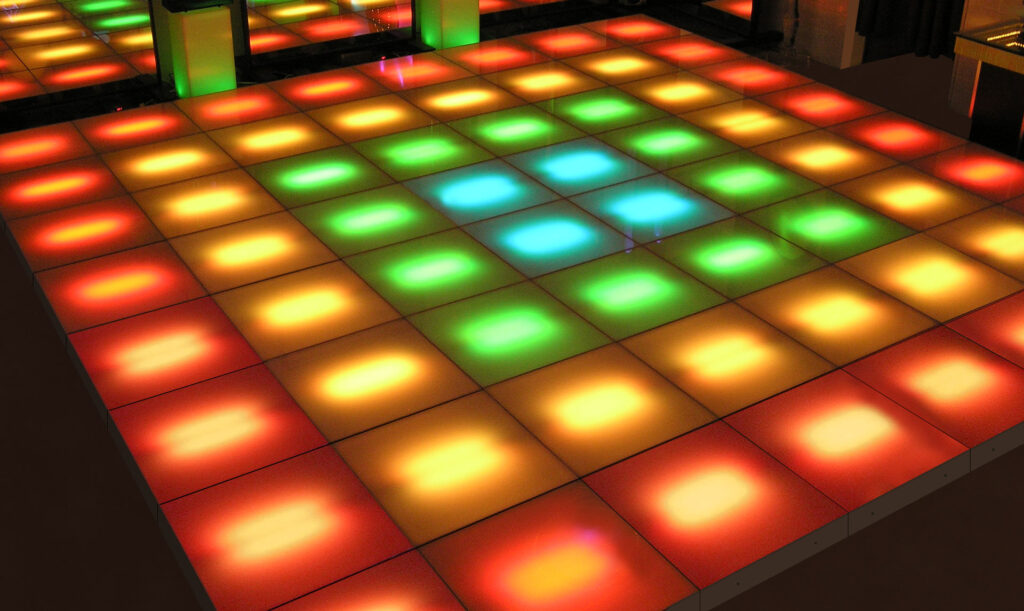Brightening Innovation Through Hue Theory within Illuminated Dance Surface Layouts
Brightening Innovation Through Hue Theory within Illuminated Dance Surface Layouts
Blog Article
Color theory represents an crucial element of design, particularly as it comes to creating light-emitting diode dancing floors. The interaction of hues can greatly influence the atmosphere and vibe of a space. By grasping how colors work together, creators can create an environment that improves the overall experience for participants. This piece explores the basics of hue principles and its application in LED dance surface layouts.
The primary hues are red, azure, and golden. These hues cannot created by blending other colors together. Intermediate hues, such as emerald, orange, and violet, are created by mixing primary hues. Third-level colors are formed by mixing a primary hue with a secondary color. Understanding these basic relationships helps designers choose colors that complement one another and create a aesthetically pleasing display. Mixing these hues on an LED dancing surface can result to vibrant and stimulating outcomes that attract the focus of dancers.
Color temperature also plays a key part in design. Colors can be categorized as warm or cool. look what i found Hot hues, such as crimson, tangerine, and golden, often to evoke feelings of excitement and heat. In contrast, cool hues like blue, emerald, and violet typically create a calm and soothing environment. Creators can utilize these color values to set the ambiance for various types of events. For instance, a celebration environment may benefit from hot colors that invigorate the crowd, while a more calm occasion might use cool colors to offer a soothing effect.
In addition to hue combinations and temperature, luminosity and intensity are essential factors to consider. Brightness denotes to how bright or dim a hue appears, while intensity measures the intensity of a hue. Vivid, site here saturated colors can generate a lively and energetic environment, ideal for dance floors. On the contrary hand, softer, less intense colors can generate a more subdued environment. Through adjusting brightness and saturation, creators can attract attention to specific sections of the dance floor or establish visual routes, leading dancers through the space.
Finally, it is crucial to consider the psychological impacts of hue in LED dance surface designs. Different hues can elicit various emotions and reactions. For instance, crimson is frequently linked with passion and energy, while azure can be soothing and peaceful. Grasping these connections allows designers to strategically apply colors to influence the actions of dancers. Through integrating color theory into LED dancing surface layouts, creators can enhance the overall encounter, rendering it memorable and pleasurable for all participating.